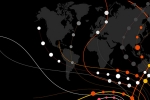PwC/AGEFI Monthly Barometer - November 2024
The Monthly PwC Business Barometer
Economic Confidence indicator in collaboration with AGEFI Luxembourg

Business confidence stabilizes amid mixed economic indicators
Key Takeaways
- The PwC Business Barometer remained stable at -4 in October, reflecting a cautious outlook amid mixed economic signals.
- Although Luxembourg is experiencing a gradual economic recovery, the construction sector continues to face significant challenges, evidenced by a YoY output decline of 7.9% during the first half of the year.
- The Euro Area is currently navigating uncertainties stemming from the economic and political challenges in Germany, which are expected to have significant implications for the region's economic outlook.
- The recent outcome of the U.S. elections may present additional challenges for economic growth in the Euro Area, particularly in light of the tariffs proposed by the newly elected President Trump on all U.S. imports.
In collaboration with AGEFI Luxembourg
Economic Confidence Indicator
November 2024
The PwC monthly business barometer remained stable at -4 in October. Business confidence has stabilized at a low level amid mixed signals from the economy.
Despite modest economic growth in the first half of 2024, business confidence in Luxembourg has stabilized, albeit at a low level. The country’s real GDP rose by 0.7% in Q1 and 0.6% in Q2 on a QoQ basis, suggesting gradual recovery. However, the construction sector faces significant challenges, showing a steep 7.2% YoY output decline in the first half of 2024. Confidence within the sector has deteriorated, although recent data indicates a slight stabilization – still well below its historical average – partly attributed to a decline in labor shortages which has contributed to a more stable employment outlook. Nevertheless, the crisis persists, with bankruptcy rates remaining at high levels through Q3. At the same time, new business registrations in the sector have plummeted to historic lows. Demand for new-build properties remains subdued, with transactions for newly constructed buildings accounting for only 15% of total property transactions in Q2, far below the historical average of 36%. On a more positive note, overall mortgage activity shows signs of recovery. The total number of new mortgages granted has increased, driven by declining interest rates, with further growth anticipated. Conversely, corporate demand for loans has yet to recover. The latest bank lending survey reveals a 3% YoY decline in new business loans during the summer, marking historically low levels.
Finally, inflation in Luxembourg has markedly decelerated, reaching 1.0% in October. Driven by falling fuel prices, inflation remains well below the ECB’s target of 2%. Consequently, no wage indexations are expected for the remainder of 2024. A national pay increase is likely to occur in the first or second quarter of 2025, according to STATEC.
In October, inflation in the Euro Area rose to 2.0%, up from 1.7% in September, according to flash estimates from Eurostat. This exceeded the forecast of 1.9% and was driven by increases in service and food prices. This inflation uptick may influence the ECB policy direction following its third consecutive 25bps rate cut in October. Economic growth in the Euro Area also surpassed expectations in Q3, with GDP expanding by 0.4%, outpacing the anticipated 0.2% growth. Ireland and Spain emerged, reporting quarterly GDP increases of 2.0% and 1.1%, respectively. Germany, which narrowly avoided contraction with a 0.2% growth rate, continues to face economic challenges. Amid cost-reduction pressures, Volkswagen announced the closure of three German plants by 2025. Political instability is further impacting Germany's economic outlook. The coalition government collapsed in early November, prompting Chancellor Olaf Scholz to call for early elections in 2025. This political uncertainty could affect Germany’s economy and may have wider implications for the Eurozone's economic stability. Meanwhile, business activity across the Euro Area showed signs of stagnation as 2024 entered its final quarter. The latest HCOB PMI survey revealed a decline in business activity in Germany and France, which offset growth seen in other countries.
The recent U.S. presidential election, which saw Donald Trump elected as the 47th President, could introduce new economic challenges for the Euro Area. Trump’s planned tariffs – 10% on all imports and 60% on imports from China – are likely to impact export-driven economies like Germany. Trump’s economic agenda is expected to drive inflation upward in the U.S., which has already edged closer to the 2.0% target, recording 2.4% in September. In response, the Fed cut its benchmark interest rate by 25bps in early November. Meanwhile, China has announced a new stimulus package aimed at boosting domestic consumption, a measure that could help mitigate the impact of Trump's trade policies. In the Middle East, geopolitical tensions are escalating. Amid ongoing conflicts in Gaza and southern Lebanon, Israel launched a series of military strikes on Iranian targets at the end of October, raising concerns about a potential escalation of the conflict.
About the PwC Business Barometer
The monthly PwC barometer, in collaboration with AGEFI Luxembourg, is an economic confidence indicator that is intended to be a simple and pragmatic tool aimed at capturing the economic atmosphere of the Grand Duchy each month.
The indicator is based on a number of sentiment indices published monthly by Eurostat and Sentix, which are based on surveys (businesses, consumers or investors/analysts).
The indicators used are: consumer confidence (EA for euro area and LUX for Luxembourg), industrial confidence (EA and LUX), construction confidence (EA and LUX), financial confidence (EA), retail confidence (EA), services confidence (EA) and the Sentix Index (EA).
Contact us

Partner, Global AWM Market Research Centre Leader, PwC Luxembourg
Tel: +352 49 48 48 2191









